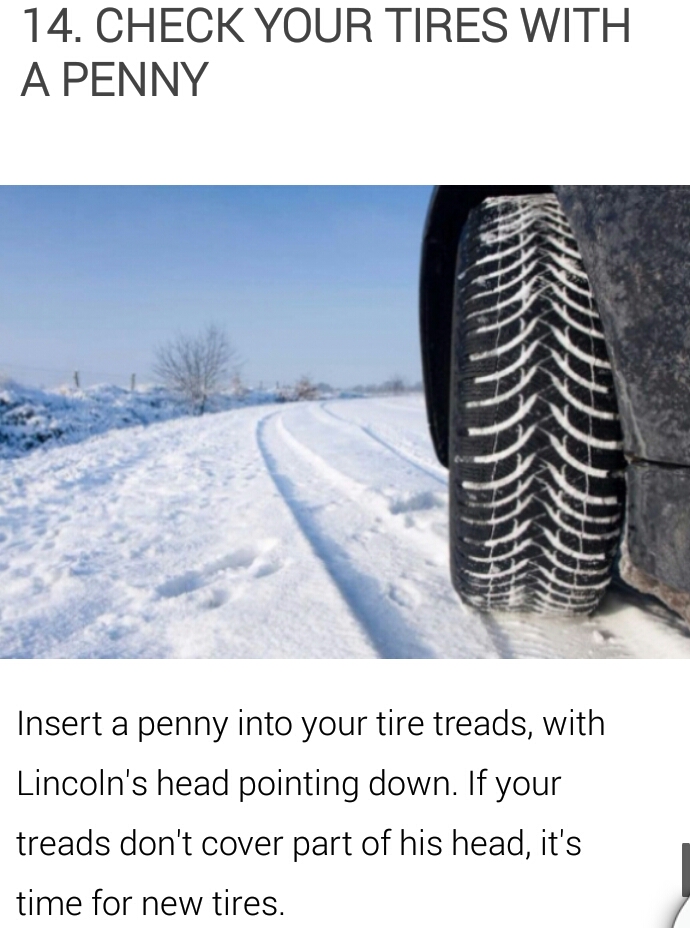Calculate Out-The-Door Price
close
Tires
When your tire treads wear thin, you could be in for a slippery ride—literally. Luckily, you can spot dangerous tread depth using only a penny, and Honest Abe’s face! The penny test is quick, easy, and can help you know exactly when to replace tires.
To check your tread depth, you don’t need any fancy tools or expert knowledge. Grab a penny, and you have everything you need!
For reference, the distance between the top of a penny and Abe’s head is about 2/32nd of an inch. If you can see the top of his head, your tread is less than 2/32nd of an inch and your safety may be at risk. Depending on where you live, continuing to drive on such thin tread could actually be against the law.
"Most states require a minimum of 2/32 of an inch (approximately 1.6 mm) of tread, but two require less, some have no requirements, and some defer to the federal criterion for commercial vehicle safety inspections," reports the National Center for Biotechnology Information.
With adequate tire tread depth, your car is able to grip the road. This is especially important when roads are snowy or wet, or when you’re driving on less-than-ideal surfaces.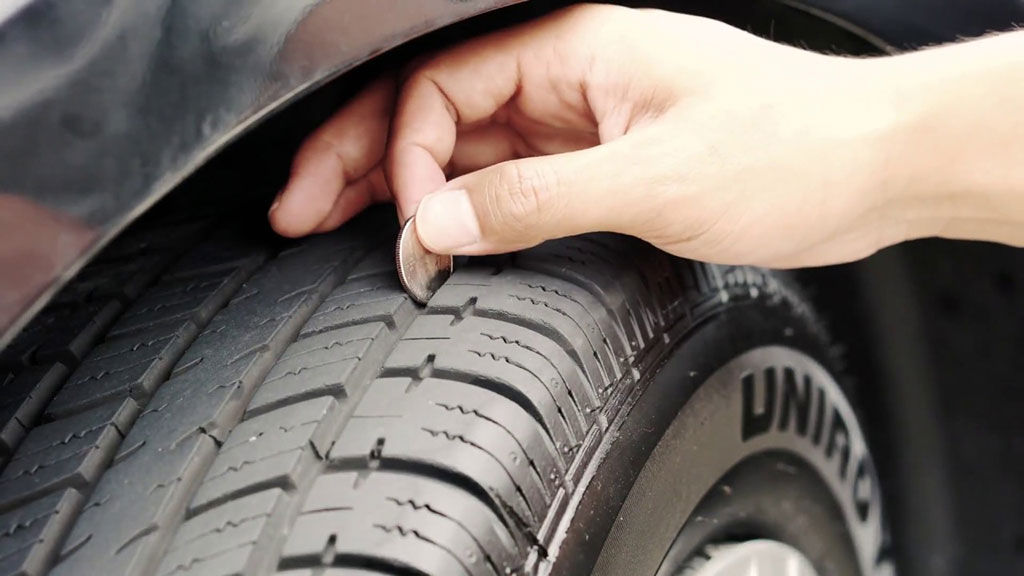 Once tread becomes shallow, your tires are more prone to slipping and sliding, creating a dangerous situation for yourself and other drivers on the road.
Once tread becomes shallow, your tires are more prone to slipping and sliding, creating a dangerous situation for yourself and other drivers on the road.
When your tires are worn, other components of your vehicle can begin to wear prematurely, too, as your vehicle experiences excess strain. While new tires can be a big investment, they’re an investment worth making.
Reach into your pocket and pull out your spare change. Give the penny test a try—it only takes a few minutes—and find out if it's the right time to replace your tires. If you're short on change, just find your nearest Firestone Complete Auto Care. Our stores offer free tire inspections that include tire tread depth measurement!
Schedule
Tires
Aug 22, 2016
Tread wear, your tires exposure to the elements, and tire age may all be contributing factors to your needing new tires. Read on to learn how to tell.
Read on to learn how to tell.
Read More
Tires
Aug 22, 2016
Firestone tires create a whole new driving experience. Learn about the technology of our tires that improves driving on straightaways and handling ability.
Read More
Tires
Aug 22, 2016
Tires are an investment & you want them to last. Here are some tire care tips to help you get the most out of your tires & info on our free inspection
Read More
LOAD 3 MORE
SHOWING 6 OF 12
Tires
Jan 14, 2018
Wondering how to choose tires? Let us simplify the process into a handful of easy-to-follow steps, from Firestone Complete Auto Care.
Read More
Tires
Jan 10, 2018
Do you need to switch all of your tires to winter tires, or will two do just fine? Get the answer, from the tire pros at Firestone Complete Auto Care!
Read More
Tires
Nov 30, 2017
Your tire wear patterns are talking. Are you interpreting? Check out images of common tire wear patterns from Firestone Complete Auto Care to learn how!
Read More
{{storeNumber}}
{{storeName}}
{{link-icon "Call Us" mobileCallLink null "call-cta"}} {{link-icon "Directions" directions "_blank" "directions-cta"}}
{{address}}
{{city}}, {{state}} {{zip}}
{{#if activeFlag}} {{#ifCond mystore "or" myPreferredStore}} {{#ifCond storeType 'eq' "TPL"}}
*Call store for appointment {{phone}}
{{else}} {{#if onlineAppointmentActiveFlag }}
{{#if myPreferredStore}}
{{else}}
*Call store for appointment {{phone}}
{{/if}} {{/ifCond}} {{else}} {{#ifCond storeType 'eq' "TPL"}}
*Call store for appointment {{phone}}
{{else}}
Schedule Appointment {{#if onlineAppointmentActiveFlag}} {{else}}
*Call store for appointment {{phone}}
{{/if}}
{{/ifCond}} {{/ifCond}} {{else}}
*Temporarily Closed Due To: {{temporarilyClosedReason}}
{{/if}} {{#if isMilitaryStore}}
*This location is on an active US military base. You may need military ID to access the location.
You may need military ID to access the location.
{{/if}}
{{#ifCond count 'eq' "3"}} Show More Stores {{/ifCond}}
Calculate Out-The-Door Price
close
With this easy test, a penny can buy you peace of mind when it comes to your tires and safety.
Place a penny head first into several tread grooves across the tire. If you always see the top of Lincoln’s head, your treads are shallow and worn. If this is the case, your tires need to be replaced.
If part of Lincoln’s head is always covered by the tread, you have more than 2/32 of an inch of tread depth remaining. This means you probably don’t need new tires.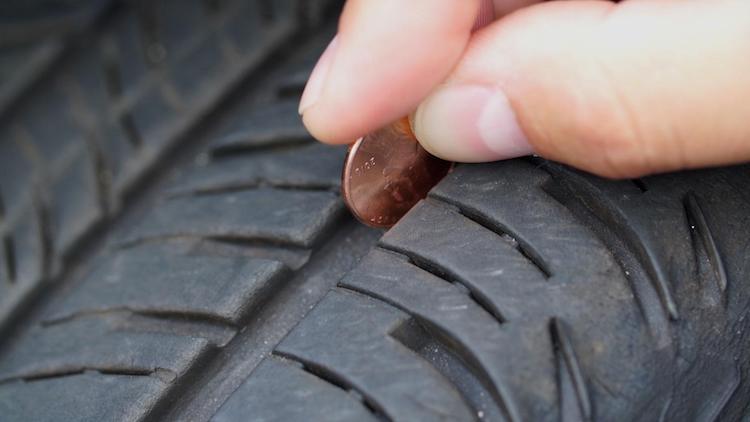
When your tire treads are worn, your car may respond poorly in adverse weather conditions like rain and snow. With good treads, your car will grip the road better. Also, having insufficient tread is considered illegal in many states. And finally, worn treads can make other parts of your car wear prematurely.
Potential Problem Areas:
When it’s time to change your tires, your Firestone Complete Auto Care dealer wants to make purchasing a new set as simple as possible. We have the best selection of quality tires to fit your vehicle, your budget and your driving style. From economy to ultra high performance tires - in the size you need from brands you trust, including our well-known Bridgestone and Firestone brands - you can find what you need right here.
We have the best selection of quality tires to fit your vehicle, your budget and your driving style. From economy to ultra high performance tires - in the size you need from brands you trust, including our well-known Bridgestone and Firestone brands - you can find what you need right here.
Make a selection from the following options:
Shop for Tires
Find a Store Near You
Schedule an Appointment
{{storeNumber}}
{{storeName}}
{{link-icon "Call Us" mobileCallLink null "call-cta"}} {{link-icon "Directions" directions "_blank" "directions-cta"}}
{{address}}
{{city}}, {{state}} {{zip}}
{{#if activeFlag}} {{#ifCond mystore "or" myPreferredStore}} {{#ifCond storeType 'eq' "TPL"}}
*Call store for appointment {{phone}}
{{else}} {{#if onlineAppointmentActiveFlag }}
{{#if myPreferredStore}}
{{else}}
*Call store for appointment {{phone}}
{{/if}} {{/ifCond}} {{else}} {{#ifCond storeType 'eq' "TPL"}}
*Call store for appointment {{phone}}
{{else}}
Schedule Appointment {{#if onlineAppointmentActiveFlag}} {{else}}
*Call store for appointment {{phone}}
{{/if}}
{{/ifCond}} {{/ifCond}} {{else}}
*Temporarily Closed Due To: {{temporarilyClosedReason}}
{{/if}} {{#if isMilitaryStore}}
*This location is on an active US military base.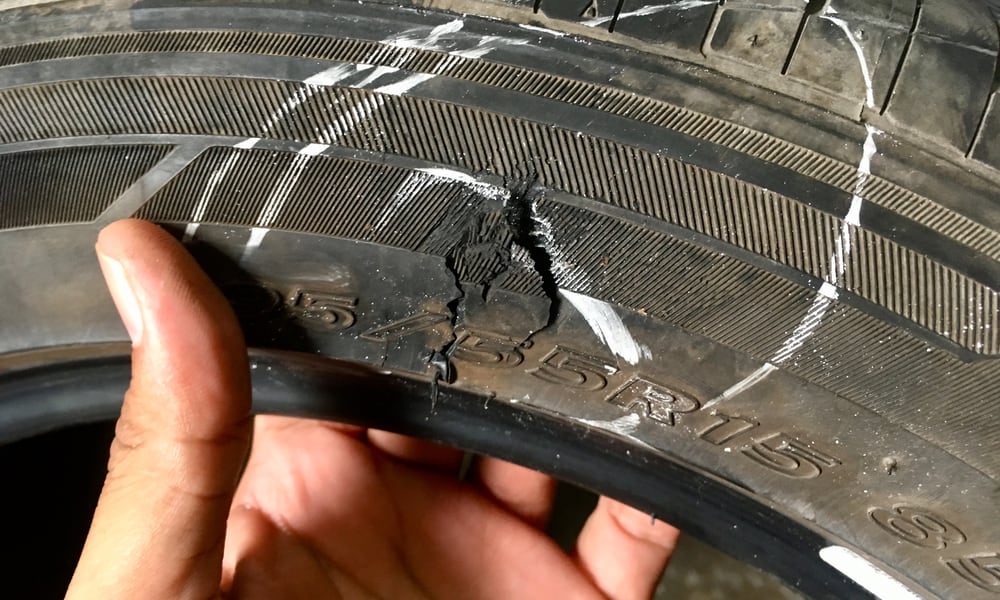 You may need military ID to access the location.
You may need military ID to access the location.
{{/if}}
In fact, the average life of any tire is 5-7 years, but a lot depends on how the owner treats his car. Aggressive driving, improper seasonal tire storage, unrepaired suspension/balancing problems, incorrect pressure and other errors can significantly shorten tire life. But worn tires can be a serious problem on the road: an increased risk of uncontrolled skidding, hydroplaning, even accidents is the price that drivers and passengers have to pay for using old tires.
Each manufacturer indicates the so-called wear index on the tire profile, which most often looks like the inscription “Treadwear 100” and means a maximum of 48,000 km on a standard road surface (polygon). In a real environment and often not the most ideal roads, this number actually needs to be divided by 1. 5 - we get 36,000 km.
5 - we get 36,000 km.
By analogy, if the wear resistance index is 150, then this means “factory” 72 thousand km, 200 - 96 thousand km., and so on.
What are the dangers of worn tires on the road:
adhesion to the roadway deteriorates, which leads to an increased likelihood of skidding, accidents, hydroplaning in case of rainy weather;
reduced cross-country ability in off-road conditions;
increases the risk of a tire puncture while driving.
It is also worth remembering that the issue of tire wear is regulated by traffic rules, and you can get a fine for using “bald” rubber. Knowing what maximum tire wear is acceptable, this is easy to avoid: 1.5-2 mm for summer, and 4-5 mm for winter (a more accurate figure is indicated by the manufacturer).
1. According to the wear indicator on the tire. To find this indicator, you need to inspect the side of the tire and find one of the markings: a triangle, a company logo, a snowflake, or the abbreviation TWI. If the tread has worn down to this indicator, it means that the tire needs to be disposed of urgently.
If the tread has worn down to this indicator, it means that the tire needs to be disposed of urgently.
2. Many people in the old fashioned way prefer to use a 10-kopeck coin. Insert it into the tread with the inscription "10 kopecks" towards you, and if it is visible, the wear level is too high, you need to replace the tire. This method is convenient, but not entirely accurate: by measuring wear in different parts of the tire in this way, it will be difficult to estimate its unevenness by eye, and this is also an extremely important indicator.
3. It is optimal to use a special gauge, depth ruler or caliper for these purposes. This will allow you to measure the wear of the tread in different parts of the tire with an accuracy of up to a millimeter and understand if there is uneven wear.
If measurements show different results in different parts of the tread, it is important to determine exactly how your tires wear in order to understand where and what the operating error is.
If the tread wears more on the sides and the center wears off less, this means that the tire pressure is insufficient and the contact patch with the road is not correct. This leads not only to poor vehicle stability, but also to increased fuel consumption.
If the tread is worn down the middle but the sidewalls are fine, then your tires are overinflated. Sometimes this is done intentionally in order to save fuel, but in this case, the tires will still have to be changed ahead of schedule.
There is also the possibility of increased wear on the inside or outside of the tread - this indicates an incorrect camber. A visual table with wear options and their causes:
Cracks on the sides of tires can indicate frequent off-road driving, improper storage, low-quality rubber or long service life, as well as incorrect tire pressure.
Bulges or "hernias" on the sides of the tires appear as a result of the side part hitting hard obstacles. Tires with such damage are not recommended.
Tires with such damage are not recommended.
Dents on the tread indicate insufficient depreciation and unadjusted camber. Having found such damage, it is necessary to drive the car to the service and make sure that the suspension is in good condition.
Individual wear spots on the tread indicate aggressive driving / braking, skidding with wheel locks, or prolonged parking of the car in one position.
Most often, this is required for the sale and purchase of used tires in order to orient the buyer in the degree of their wear. Many sellers give this figure at random, but this method has nothing to do with the actual assessment of the degree of tire wear. It is also important to understand that a conditional 50% wear for a summer tire is an acceptable value, while 50% wear of a winter tire tread is a sign that the tire cannot be used. Therefore, it is important to know how to accurately determine the percentage of tire wear so as not to get into an unpleasant situation.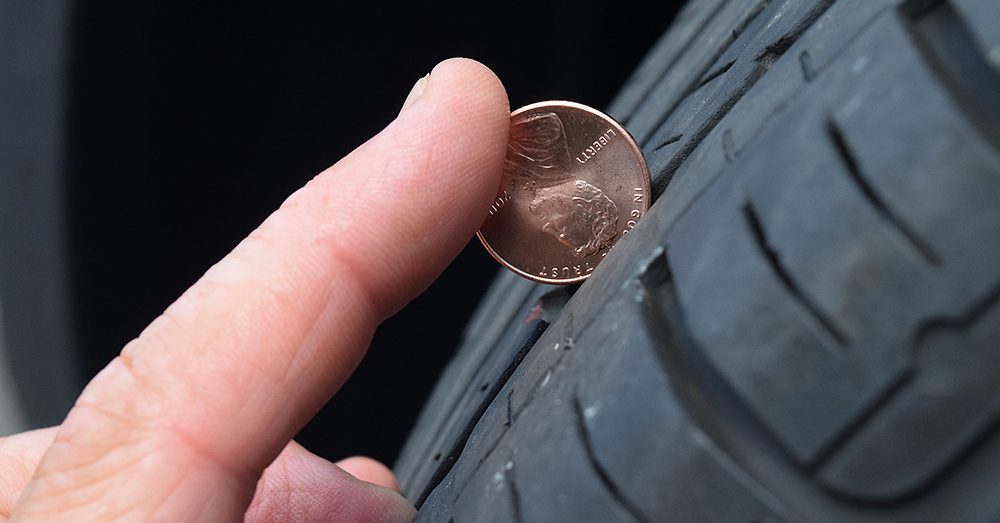
Many people divide the actual tread height by the height of the same, but new tire, and get a certain percentage of wear. This would be correct, if not for one BUT: we cannot physically erase the tread to zero, and the law prohibits the use of tires with a tread below the permitted values.
You can calculate actual tire wear by dividing the difference between the new tire height and the actual tire height by the difference between the new tire tread height and the minimum possible tread height for that tire, and then multiplying this number by 100.
If it is impossible to find out the height of the same, but with a new tire, use the average values of your tire type:
| Tire type | Average tread height at start of use |
| Winter tires with Scandinavian tread | 10 mm |
| Winter with regular or asymmetric tread | 9 mm |
| High-speed winter | 7 mm |
| Summer tires with classic tread | 8 mm |
| Summer speed | 7 mm |
You can check summer tires for wear a little less often than winter tires, since in summer the tread depth is not so important for patency.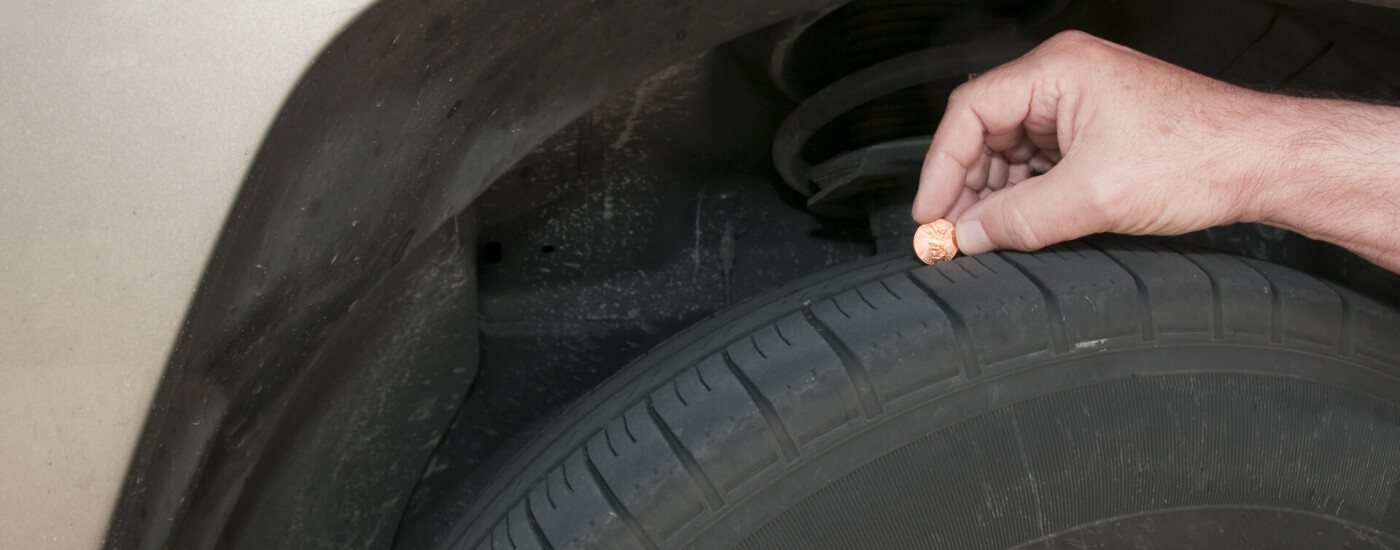
If you have assessed the condition of your tires on all of the above factors and realized that the tires are worn out, be sure to replace them with new ones as soon as possible.
Tire wear in the United States is checked using a coin with the image of the first president of the country. A one-dollar coin is inserted into the groove of the tread with Washington's head down. If Washington's hair is visible, then it's time to buy new tires. A coin with a face value of 1 cent will also help to check the wear of automobile rubber. If the top of the Lincoln is visible, then the tires have reached the tire wear rate and must be replaced immediately.
Tire wear can also be determined with a 1 euro coin. It must be inserted into that part of the tire where the tread is most worn. If the golden circle is in rubber, then the tire will still serve you. If the gold part of the coin is completely visible, then it's time to change the shoes of your car.
Tire wear can also be determined using Russian money. The domestic 2-ruble coin must be inserted into the protector with the eagle's head down. If the top of the bird is visible above the surface of the tire, then the tire has not yet reached the end of its life.
Premature tire wear can be avoided. According to the Research Institute of the Tire Industry (NIIShP), the "life" of half of the tires is reduced due to improper operation. After all, the service life of rubber largely depends on driving style, road conditions, compliance with the load index and correct tire pressure. Therefore, it is not surprising that with the same model of car and “shoes”, the mileage of their tires can differ by several thousand kilometers.
The main causes affecting premature tire wear
For new tires, the break-in process is important. The first 200-300 kilometers of newly purchased tires should be extremely careful, especially in winter or in rainy weather. This is due to the fact that before vulcanization, the treads of new tires are covered with a separating layer, which should be erased only during operation. Therefore, all types of rubber must be run-in.
The first 200-300 kilometers of newly purchased tires should be extremely careful, especially in winter or in rainy weather. This is due to the fact that before vulcanization, the treads of new tires are covered with a separating layer, which should be erased only during operation. Therefore, all types of rubber must be run-in.
Tire wear occurs in a variety of ways:
Uneven tire wear is normal because the tire is subjected to uneven loads while driving.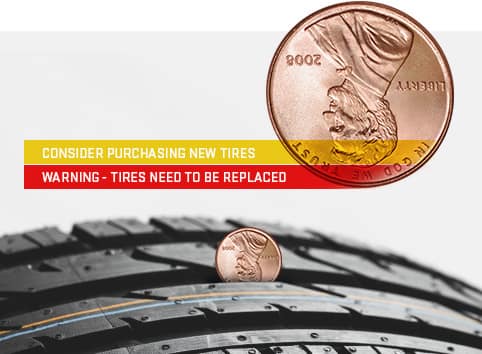 In this case, a new wheel balancing will help. In most cases, when sawtooth teeth form on the transverse grooves of the profile, it is necessary to use cruciform wheel balancing. But this will only help with the correct geometry of the axis. This will change the direction of the tire. The sawtooth teeth will gradually disappear, along with them the noise will also disappear.
In this case, a new wheel balancing will help. In most cases, when sawtooth teeth form on the transverse grooves of the profile, it is necessary to use cruciform wheel balancing. But this will only help with the correct geometry of the axis. This will change the direction of the tire. The sawtooth teeth will gradually disappear, along with them the noise will also disappear.
If wheels with asymmetric tread patterns are changed regularly every 10,000 km, uneven wear of all tires can be avoided. But the replacement must be done on one side. That is, the front right wheel should only change to the rear right, and vice versa.
In 1992, a uniform wear rate for summer tires was established in Europe - the minimum profile depth for tires for cars, trucks and motorcycles is 1.6 mm. This requirement also applies in Russia. An exception to the rule are light wheels with a minimum tread height of 1 mm. But for wide-profile and summer tires, this rate is too small.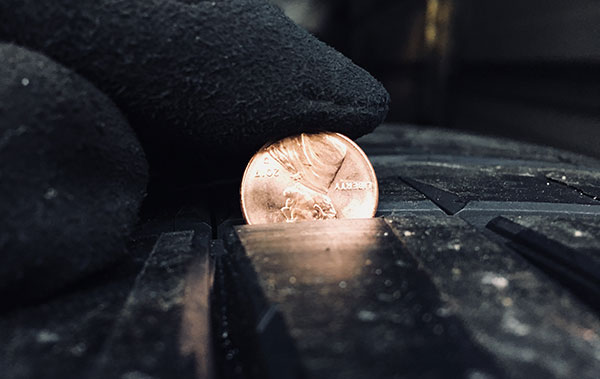 With such a profile depth on a wet road, the tire will have poor handling. For safety reasons, summer tires should be changed already when the remaining profile depth reaches 2 mm (wide profile - 3 mm). Modern winter tires have a tread depth of 9, depending on the manufacturer.-12 mm. Permissible wear for them is 4-6 mm.
With such a profile depth on a wet road, the tire will have poor handling. For safety reasons, summer tires should be changed already when the remaining profile depth reaches 2 mm (wide profile - 3 mm). Modern winter tires have a tread depth of 9, depending on the manufacturer.-12 mm. Permissible wear for them is 4-6 mm.
Many modern tires have built-in wear indicators in the form of small rubber pimples. They are soldered into the base of the protector. When the tire wears down to acceptable limits, the pimples become flush with the tread. This means it's time to change the tire.
In addition, the American tire marking uses the TWI (Tread Wear Indication) tread wear indicator. Sometimes it is indicated by arrows. The tire wear indicator is located evenly in 6-8 places around the perimeter of the tire.
Over time, the life of the tire decreases, and at the same time, the percentage of wear increases. If the bead is damaged during installation, the percentage of wear increases to 10%.